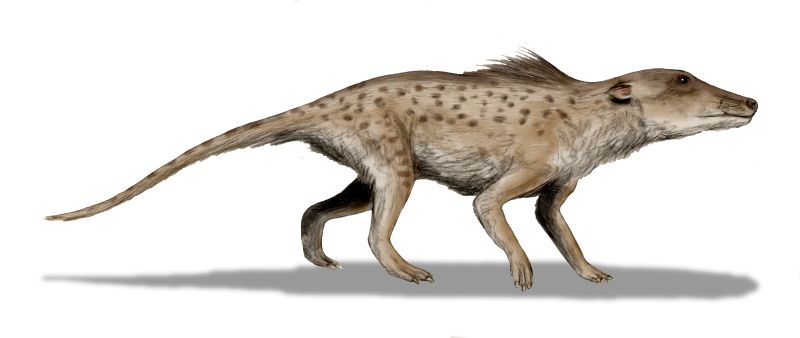Cetacean Trivia
This article relates to Move Like Water

 Much of biologist Hannah Stowe's memoir, Move Like Water, records her experiences on sailing vessels researching cetaceans – an entirely aquatic group of mammals that includes whales, dolphins and porpoises. Some interesting trivia regarding these magnificent creatures:
Much of biologist Hannah Stowe's memoir, Move Like Water, records her experiences on sailing vessels researching cetaceans – an entirely aquatic group of mammals that includes whales, dolphins and porpoises. Some interesting trivia regarding these magnificent creatures:
- The fossil record shows the first cetaceans evolved from land-dwelling quadrupeds around 55.8 to 49 million years ago, in the Early Eocene epoch. Their ancestors were deer-like creatures that moved back into the sea, flippers replacing their legs over the eons.
- At up to 32 feet long, the orca (aka killer whale) is the largest member of the oceanic dolphin family. The common bottlenose dolphin, which defines the family for many people, ranges from 8 to 13 feet, and the smallest is the Hector's dolphin, at only 4 feet in length.
- The blue whale is the largest creature ever to have lived on Earth. It can reach up to 100 feet long and weigh 200 tons – as much as 33 elephants. Its heart alone weighs 1,000 pounds – about the weight of an average dairy cow.
- Cetaceans used to be an important natural resource, valued primarily for the oil that could be extracted from their blubber, but today they contribute much more to economies through whale-watching tourism.
- Breathing isn't an automatic function in cetaceans the way it is in people. When they lose consciousness, they stop breathing and quickly die. For that reason, they don't sleep in the way humans do. Dolphins shut down half of their brains during inactivity, allowing the other half to be on the lookout for predators and handle functions like breathing. Large whales, by contrast, rest just below the surface of the water, using their flukes to periodically rise up for breath.
- To insulate the body from cold ocean temperatures, a layer of cetaceans' skin evolved into blubber, which is rich in oil and fat that conducts heat poorly. It can be up to 12 inches thick in large whales and yield up to 50 tons of oil if harvested.
- Blue whales can breed one calf every two years. Their young are born tail first, and fed mother's milk that is up to 50% fat. Blue whale young weigh about 3 tons when born and are over 20 feet long. They grow about a foot and put on an average of 200 pounds each day.
- Information on cetacean lifespan is limited, but some humpbacks, blue whales and fin whales are estimated to be 90-100 years old, while bowhead whales can live to be 200.
- It's hard to know how many cetaceans existed before commercial whalers impacted their populations. Some researchers estimate that at least 2.9 million were killed in the 20th century, with some species' population reduced by up to 90%. Their numbers are rebounding, with approximately 1.5 million whales swimming in today's oceans. Some groups are on the verge of going extinct, however, particularly freshwater dolphins in polluted riverways like the Yangtze, Ganges and Indus. Other threats to the cetacean population include collisions with ships, getting entangled in commercial fishing gear, illegal hunting and global warming.
Pakicetus inachus, a whale ancestor from the Early Eocene of Pakistan, after Nummelai et al., (2006), pencil drawing, digital coloring, by Nobu Tamura, November 29, 2007. ©N. Tamura (CC BY-SA)
Filed under Nature and the Environment
 This article relates to Move Like Water.
It first ran in the September 20, 2023
issue of BookBrowse Recommends.
This article relates to Move Like Water.
It first ran in the September 20, 2023
issue of BookBrowse Recommends.
This review is available to non-members for a limited time. For full access become a member today.
Membership Advantages
- Reviews
- "Beyond the Book" articles
- Free books to read and review (US only)
- Find books by time period, setting & theme
- Read-alike suggestions by book and author
- Book club discussions
- and much more!
-
Just $60 for 12 months or
$20 for 3 months.
- More about membership!

 Much of biologist Hannah Stowe's memoir, Move Like Water, records her experiences on sailing vessels researching cetaceans – an entirely aquatic group of mammals that includes whales, dolphins and porpoises. Some interesting trivia regarding these magnificent creatures:
Much of biologist Hannah Stowe's memoir, Move Like Water, records her experiences on sailing vessels researching cetaceans – an entirely aquatic group of mammals that includes whales, dolphins and porpoises. Some interesting trivia regarding these magnificent creatures:![]() This article relates to Move Like Water.
It first ran in the September 20, 2023
issue of BookBrowse Recommends.
This article relates to Move Like Water.
It first ran in the September 20, 2023
issue of BookBrowse Recommends.